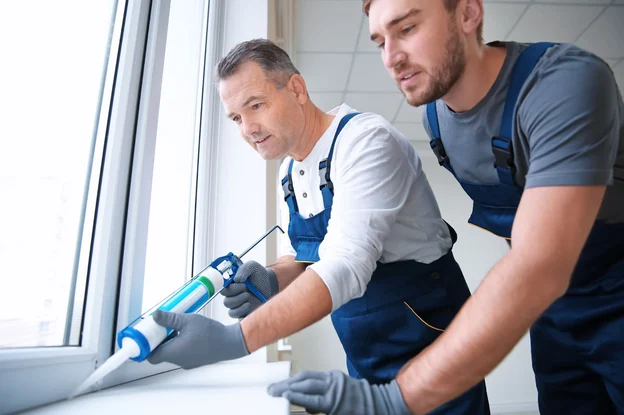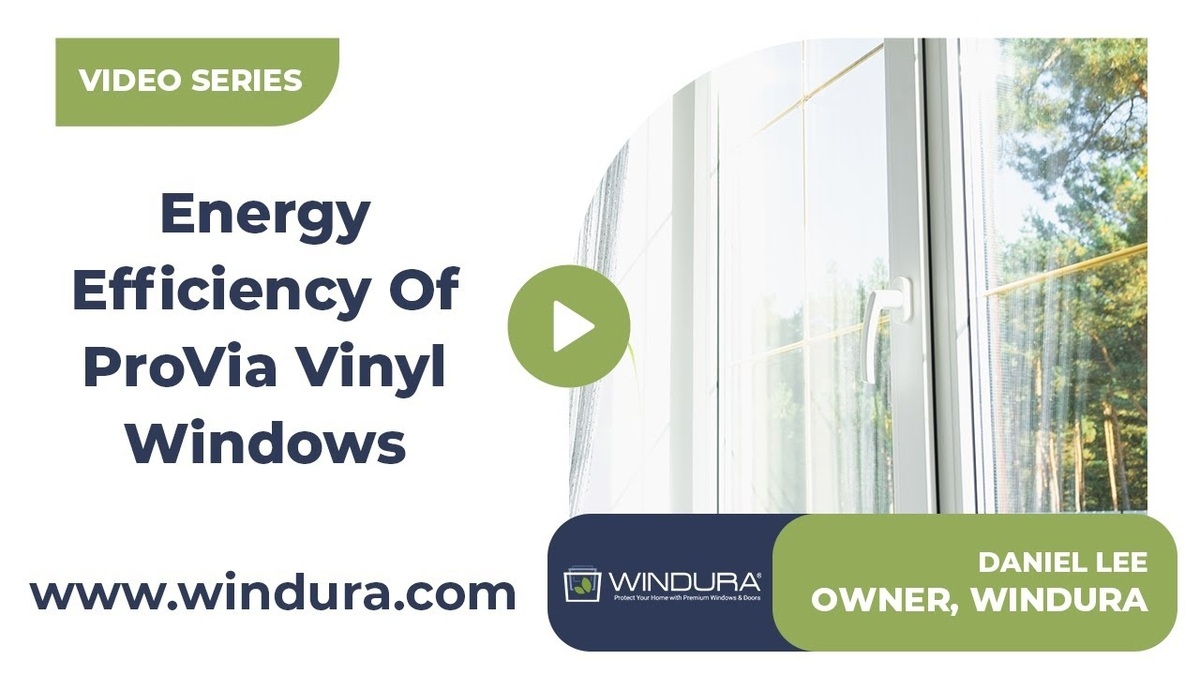Windows are an essential part of any home. They let in natural light and fresh air, and can also add a stylish touch to your room. But in Kansas City, where thunderstorms and water leaks are always a concern, a small drop can indicate a significant problem. Persistent leaks go far beyond cleanup. Most of the time, they cause wood rot, mold to grow behind your walls, and structural damage that can be costly to repair. Homeowners often forget that strong winds and heavy rain can cause windows to break, but the damage shows it.
Understanding What a Leaking Window Really Means
When you notice water coming through your window during a storm, it’s much more than an inconvenience; it is a clear warning sign of deeper damage. A leak indicates that your home’s protective envelope, the system designed to keep water out, has failed, posing risks that extend far beyond a wet windowsill. In a city like Kansas City, where unpredictable weather and powerful thunderstorms are part of life, having reliable, high-quality windows is essential.
The good news is: You don’t have to settle for tired, worn-out, leaky windows! Today, we’ll explain the top 5 reasons why windows leak and how modern, high-performance windows, like Marvin Windows, can keep your home sealed tight, even through the worst Kansas City thunderstorms.
The Top 4 Reasons Why Windows Leak
Here are some of the most common reasons for window leaks during spring rain and windstorms.
1. Separating Seams
When a window is installed in your home, it has to seamlessly connect with your trim, siding, roof, gutters, and walls. Installers do this by sealing the windows to the surrounding materials. Exposure to the sun, missing paint, and age can all cause the seam that seals the space between your window and its surrounding structure to crack or loosen.
As a seam separates, water seeps through the cracks. This can lead to interior or exterior damage, depending on where the gaps have formed. The appearance of cracks in the sealant around your windows is a key sign that this has happened. Also, look for damage to the materials around the windows, like the wood siding underneath them.
2. Worn or Damaged Weatherstripping
Damaged weatherstripping is one of the most common reasons for windows to leak. If your weatherstripping is worn or damaged, it might not create a proper seal when closed, allowing water to seep in.
You can usually tell when you need to replace your weatherstripping if you feel a draft coming from around the window or if you see cracks or gaps in the material. You can also determine whether the weatherstripping needs to be replaced if you are able to see light coming through the gap or if the weatherstripping is flat and matted down. An easy way to test for damaged weatherstripping without leaving your living room is to close your windows on a windy day. If you can feel any air coming in from the inside, it’s time to replace the windows.
Learning how to fix drafty windows often begins with replacing the weatherstripping. This relatively simple repair not only restores comfort but also improves energy efficiency and lowers heating and cooling costs. Fixing this issue quickly can help you avoid bigger problems like water damage or structural issues.
3. Improper Window Installation
Another common reason for a leaky window is improper installation. We all assume the team that installed our windows did it the right way. Unfortunately, some installers are better than others when it comes to skill and attention to detail.
If your windows are not installed level or plumb, it can create gaps that allow water to seep in. Additionally, if the flashing was not installed correctly or if there are gaps in the installation, water can also enter through these areas.
If you’re unsure whether the contractor installed your windows correctly, it’s best to hire a professional to inspect them. They will be able to inform you if there are any issues with the installation and can rectify them accordingly. Hiring a professional might seem like an unnecessary expense, but it could save you money in the long run by preventing further damage to your home.
4. Cracked or Broken Glass
Finally, another common reason for windows to leak is cracked or broken glass. If there is any damage to the glass, it can create gaps that allow water to seep in, especially if you have old single-pane windows. In addition, if the sealant around the glass is damaged, it can also cause leaks.
If you see any cracks or breaks in your window glass, it’s essential to have them repaired as soon as possible. This will help prevent water leaks and also improve the overall energy efficiency of your home.
Now that we’ve explored why windows leak, here are a few ways to prevent them from leaking.

4 Ways to Keep Windows From Leaking
Here are a few simple things you can do to help prevent a window leak:
1. Determine Where the Leak Is Coming From
The no. 1 way to fix a leak is to identify where it’s coming from. You want to be sure you solve the leak at its source so you don’t have to pay to fix it twice. And just because you see water leaking out of a window doesn’t mean water is coming through the window on the outside.
Let me explain: If there’s a crack in your siding, water can run down the side of your house, soak into the top of your window, and start to seep inside. The window itself could be perfectly fine. And if you were to replace the window in this case, you could find yourself facing the exact same leak years down the road. Another example can occur if the window in the story above, where you found the leak, has a rotted seal. Water can soak into the seal, drain down the wall, and make its way into the bottom window. Again, there’s absolutely nothing wrong with your bottom window in this case. If you were to replace it, the leak would come right back.
So, how do you solve the mystery of where the leak is coming from? You start with two people: one on the inside and one on the outside. On a dry, sunny day, have the person inside spray a hose against where you think the leak is coming from for 10 minutes. After 10 minutes, if you see no leak, it’s time to check for another possible cause, like nearby siding. Start from the top down (so if you have a window above the leaking window, check it first), checking the window where the leak is visible last.
2. Replace the Exterior Caulking
Once you have located where the water is sneaking in from, you’ll want to apply caulk to the area to seal any gaps or cracks. Be sure to use a high-quality exterior sealant like commercial-grade Solar Seal 900, which we personally use on our projects.
Another good option is the OSI Quad Max, which is often available at home improvement stores. It comes in clear or colors to match your home.
You need to purchase the sealant that is correct for your application. Unfortunately, this can be easy to overlook. There is interior and exterior sealant. Some can be applied dry, some must be applied wet, and others must be used between certain temperatures. Read the instructions thoroughly before you apply them to ensure you get them right the first time.
3. Replace the Weatherstripping
If caulking alone doesn’t solve the problem, weatherstripping is your next best step. Weatherstripping can create a proper seal around your window to keep water out, whether it’s coming from above, below, or along the sides of the panes.
Various types of weatherstripping, such as foam, felt, and rubber, are available. Choosing the right kind of weatherstripping for your home is important, as some are better suited for certain climates. Not all types of weatherstripping will work for your specific window.
The first step is to call your window manufacturer and see if they can send you some of the exact weather stripping for your window. If that doesn’t work, you can find similar types online or at a specialty store. You might also consider calling your local window and door company with some industry-specific weatherstripping for part of their service department. They may be willing to sell it to you.
4. Replace Your Windows in Kansas City
If none of the previous steps have stopped the leak or your windows are in the 20-30 year range, it might be time to consider replacement. Over time, windows can settle and warp, creating gaps and allowing water to seep in. If this is the case, you need to get the windows replaced sooner rather than later. Otherwise, that leaking can lead to costly wood rot.
A great option is Marvin Essential Windows. Marvin Windows is one of our top brands to recommend for durability because they’re made with strong, high-performance fiberglass, which is eight times stronger than vinyl and three times stronger than wood. Marvin Essential Windows come in a variety of styles to match your home’s exterior. The windows also come with the Marvin Bright View screen mesh, a fiberglass design that keeps out bugs and debris while allowing for fresh air and ventilation. It also repels water, dirt, and grime while allowing natural light into your home for a sharp, vivid view.
If Marvin Essential Windows aren’t a good fit for your home, there are other window brands for you to choose from. A dependable window installation company can guide you through your options and help you select the best choice for your home, style, and budget.

Upgrade Your Leaky Windows with Marvin Windows and Windura
Leaky windows can be a significant source of frustration. Fortunately, by following the tips above, you can stop window leaks before they cause further damage. If you’d like a professional to handle your window problems, contact Windura today! As a Certified Marvin Windows Installing Retailer with over two decades of experience, Windura has assisted countless families in the Kansas City area in feeling comfortable and secure in their homes.
Often, you can tell a window is prone to leaking before thunderstorms even hit. Our team will thoroughly evaluate your windows and identify any potential hidden damage. Even if you don’t choose our service, you will walk away from your free consultation with a clear understanding of the problem and how to fix it. Give us a call today to schedule your free in-home consultation.






